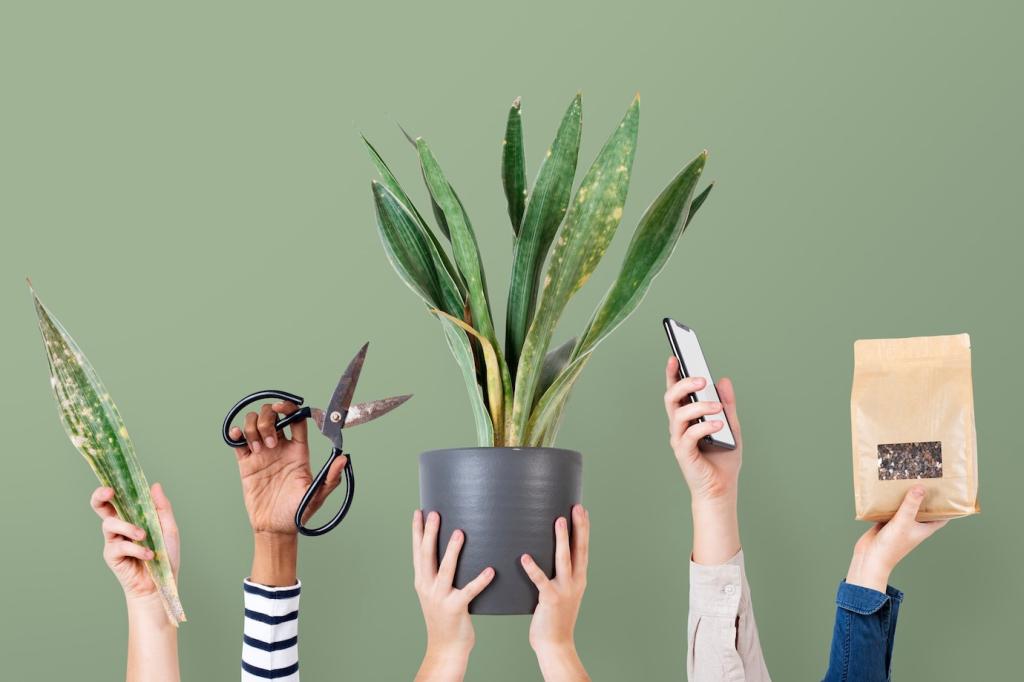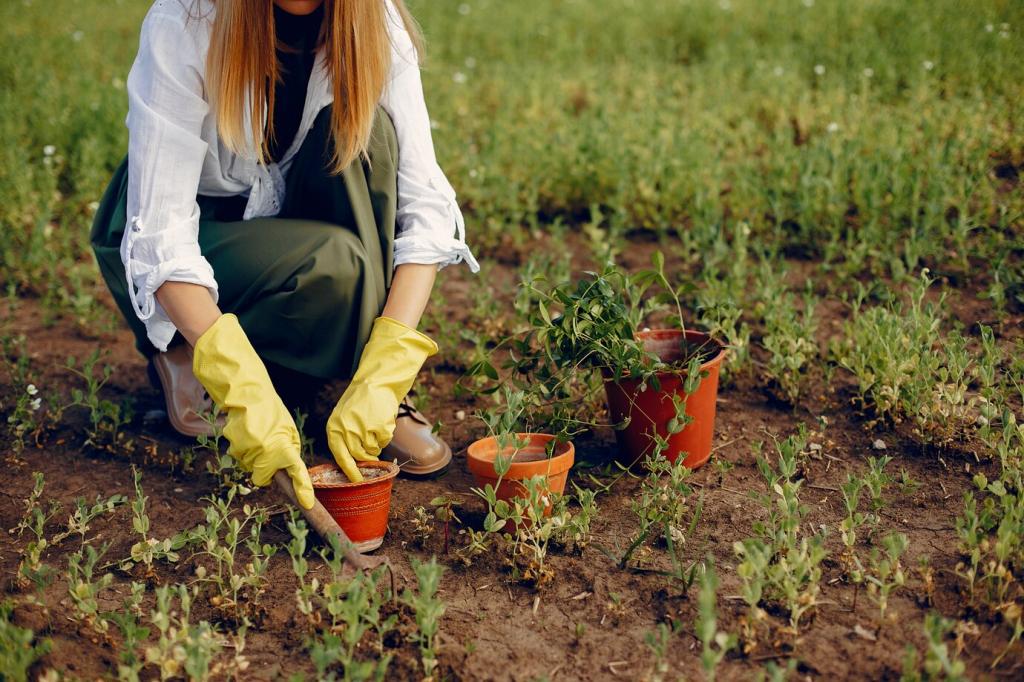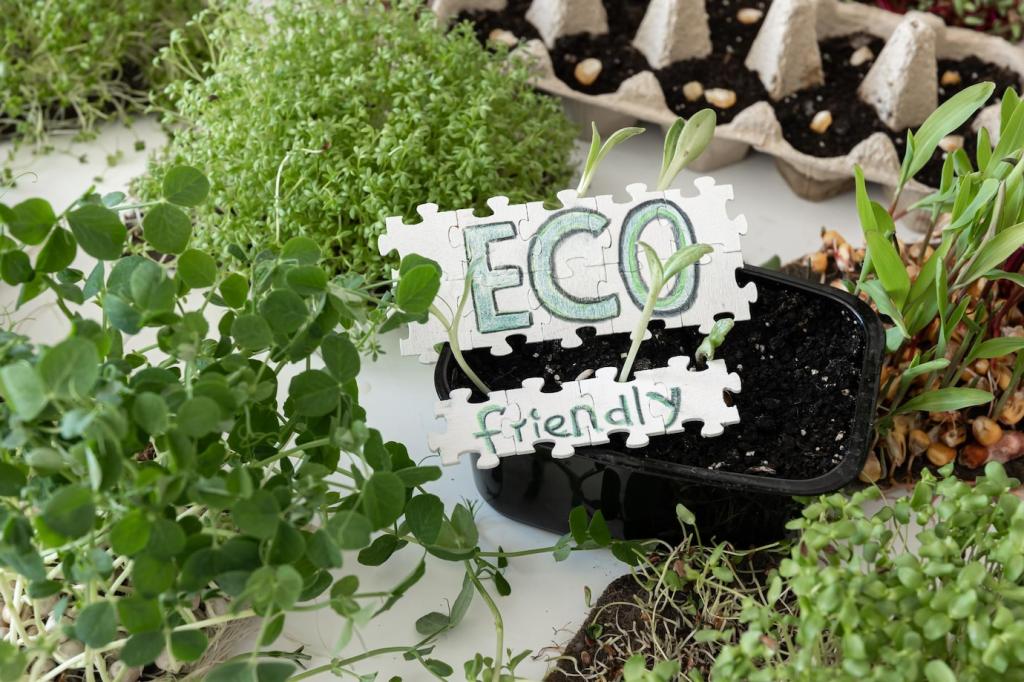
Compact Green Living: Sustainable Plant Design for Every Corner
Chosen theme: Compact Green Living: Sustainable Plant Design. Welcome to a home page that turns tiny spaces into flourishing sanctuaries using thoughtful, low-impact plant strategies. From window ledges to narrow hallways, we will help you grow beauty and function without clutter. Subscribe for weekly micro-forest ideas, and share what you are growing today.
Use slim, tall planters to define a reading nook or a dining edge rather than solid furniture. A line of lightweight, recycled-fiber planters can soften boundaries, absorb noise, and add oxygen without blocking airflow. Try mobile bases to re-zone instantly when guests arrive.
Small Space, Big Canopy: Layout Principles for Compact Homes
Keep pathways at least shoulder width and place plants where leaves will not snag clothing. Tuck trailing species onto wall shelves to free floor space while preserving a calm, open feel. Aim for layered heights that guide the eye upward, expanding perceived volume.
Small Space, Big Canopy: Layout Principles for Compact Homes
Light Matters: Matching Plants to Microclimates
Reading natural light without gadgets
Stand in each spot at breakfast, midday, and dusk to note brightness, glare, and heat. Track leaf behavior for a week; stretching suggests insufficient light, while scorched edges warn of excess. Reflective surfaces like mirrors can bounce light deeper, reducing reliance on artificial lamps.
Right plant, right place: shade to sun
Place shade-tolerant species like ZZ or pothos in corridors, and position light-hungry herbs and succulents near the brightest panes. Rotate pots quarterly to balance growth and reduce leaning. Matching needs prevents wasted energy on artificial supplementation and fosters longer, healthier plant lives.
Case note: a north-facing bay window rescue
A renter’s drooping herbs revived when relocated to a brighter sill while the bay hosted ferns, peperomia, and moss bowls. The switch used existing light more intelligently, eliminating a lamp and reducing energy use. Within weeks, growth evened out and watering stabilized significantly.
Vertical Green: Walls, Rails, and Modular Magic
Install narrow, ventilated shelves that let light pass between tiers, preventing the top row from shading the lower. Rail-mounted planters transform balcony edges into herb farms without consuming chair space. Use corrosion-resistant brackets and lightweight media to keep structural loads comfortably safe.
Vertical Green: Walls, Rails, and Modular Magic
Felt pockets made from recycled plastic bottles retain moisture while allowing roots to breathe. Arrange in staggered rows to reduce drips and distribute weight. Mix edible lettuces with trailing ornamentals for function and beauty. When moving, unhook modules and pack flat to reduce waste.

Water-Wise Habits: Less Waste, Healthier Roots
A cotton wick draws moisture from a reservoir to the root zone, using capillary action to keep soil consistently damp, not soggy. Sub-irrigated planters extend intervals between waterings, ideal for busy routines. They also reduce runoff, saving both water and nutrients over time.
Edible Greens Without the Mess
Sow trays of radish, pea, or sunflower microgreens weekly, staggering plantings to harvest fresh every few days. Shallow trays reduce media use and cleanup time. A sunny sill and a spray bottle are enough, delivering vitamins and crunch from seed to plate in under two weeks.
Style With Purpose: Cohesive Looks in Tight Quarters
Palette and texture harmony
Repeat two container tones, like warm terracotta and soft gray, to unite different species. Contrast glossy leaves with matte pots or woven baskets for tactile depth. This visual rhythm calms busy rooms and makes each plant feel intentional rather than scattered or accidental.
Containers that double as furniture
Try a bench planter with storage beneath for gardening tools, or a side table that houses a self-watering insert. Multi-use pieces earn their footprint and reduce clutter. Favor durable, repairable materials to extend life and keep your green design truly sustainable over years.
Evening ambience and plant-friendly light
Warm, low-intensity LEDs offer cozy evenings without overstimulating foliage. Place lights to graze leaves, casting gentle shadows that add depth. Use timers to protect circadian rhythms for you and your plants, creating a space that rests and wakes in sync with natural cycles.

Before: the forgotten ledge
The balcony held one rusty chair and a windblown receipt. Morning sun blazed for two hours, then shade settled. Instead of giving up, the reader measured light, mapped wind with a ribbon, and sketched a plan that favored tough herbs and flexible, tethered trellises.
During: learning the site’s rhythm
Reused olive tins became planters with wicks, and a salvaged ladder offered vertical rungs. Basil sulked, but thyme thrived, teaching a lesson about heat and airflow. By moving pots an arm’s width, the microclimate shifted, and the entire planting found a calmer, steadier balance.
After: harvests and tiny visitors
In six weeks, blossoms drew bees, and weekend omelets welcomed balcony chives. Water use dropped thanks to sub-irrigation, and neighbors traded cuttings over tea. The suitcase balcony grew into a shared ritual, proving compact green living can nourish both people and place.
